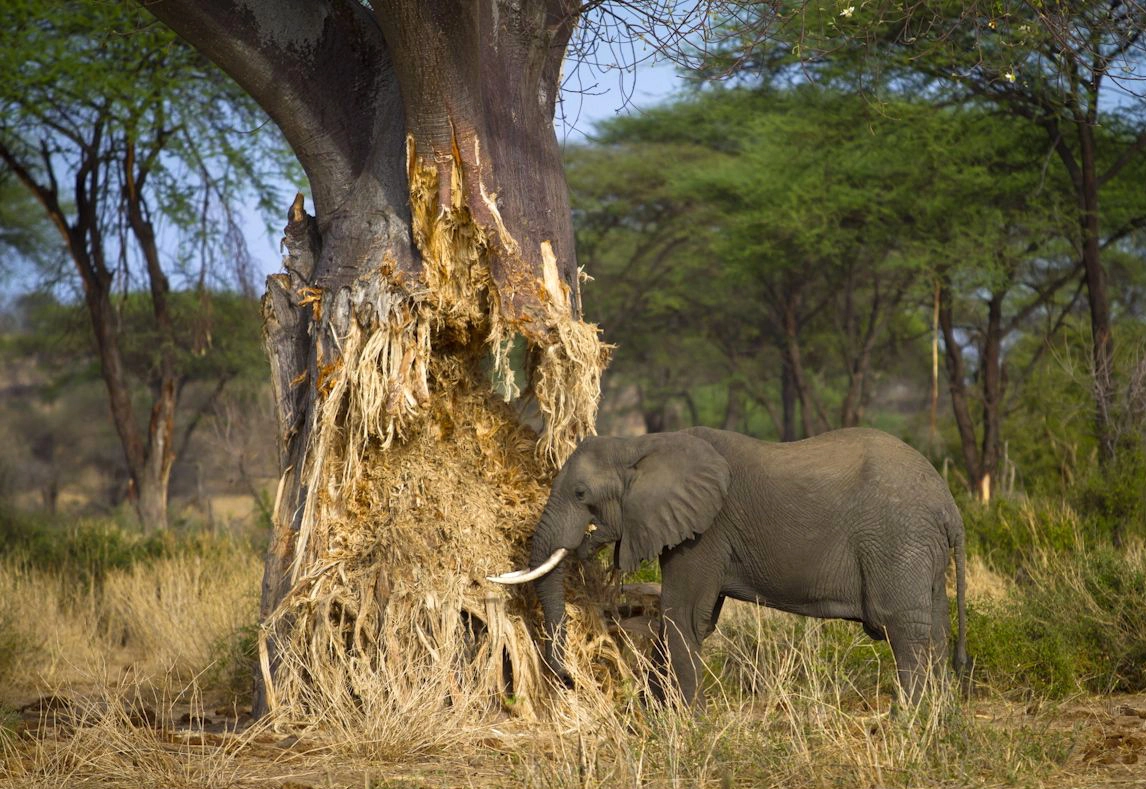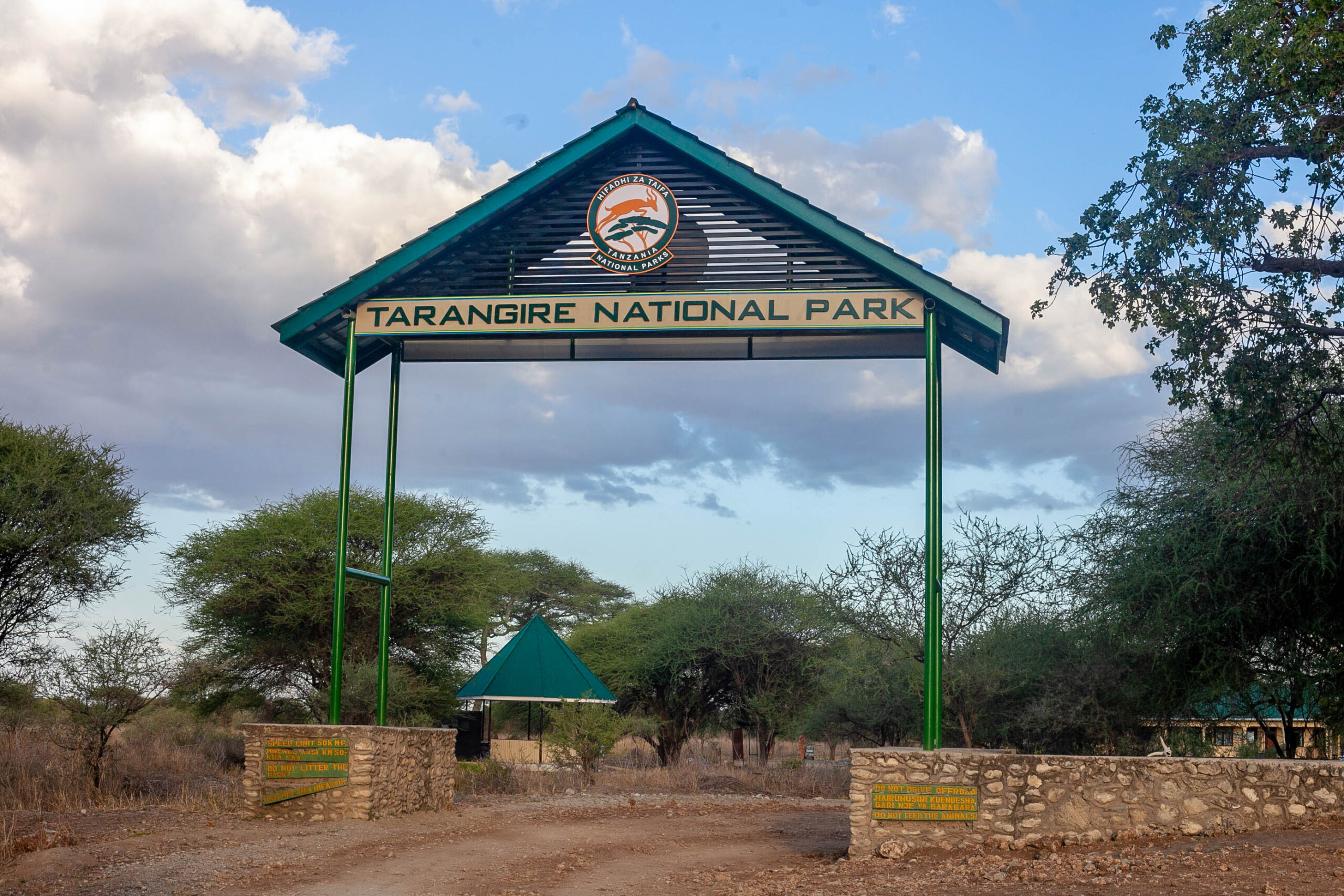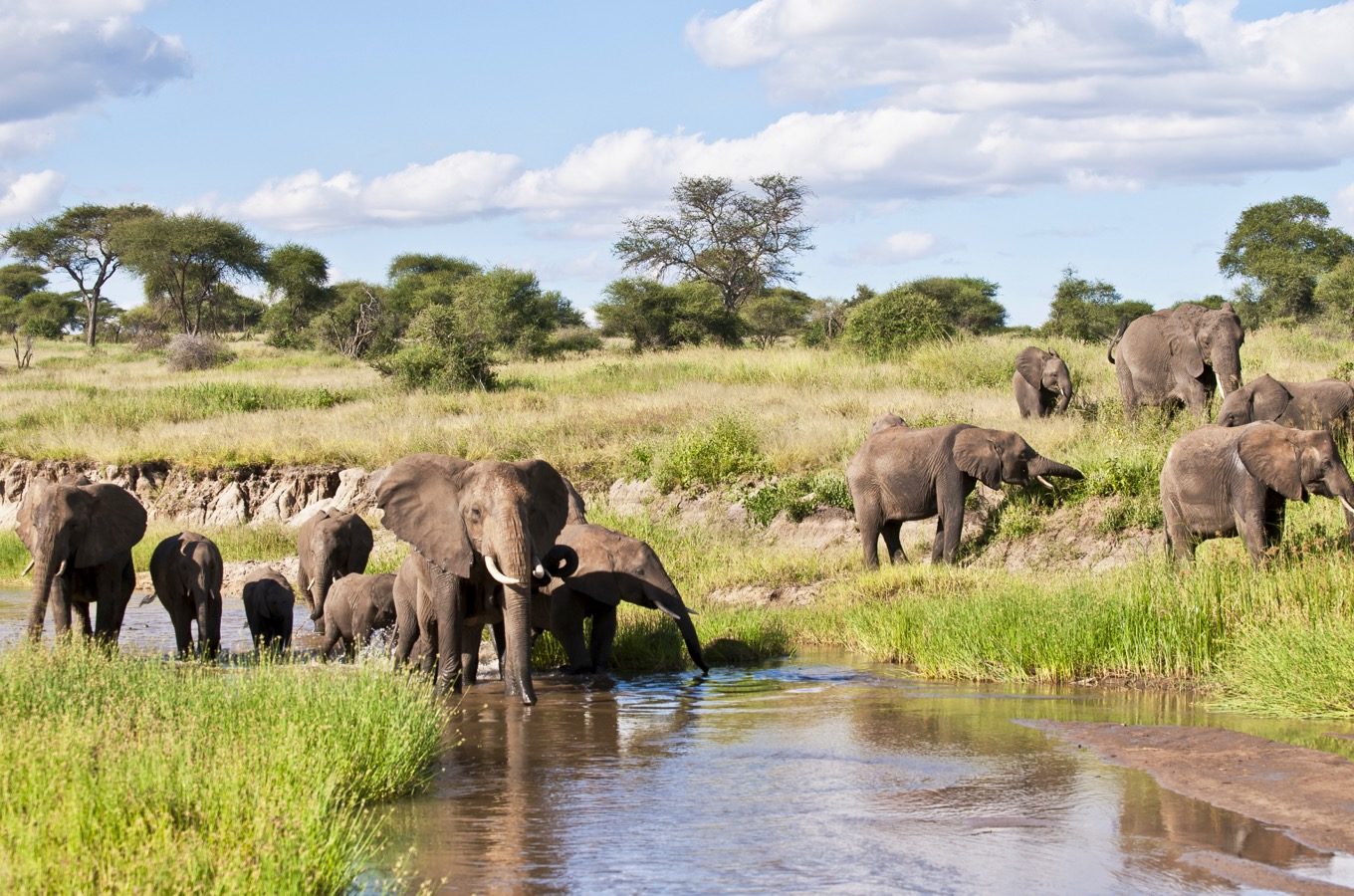Tarangire National Park: A Haven of Elephants and Diverse Wildlife
Tarangire National Park, situated in northern Tanzania, is a hidden gem in East Africa’s rich tapestry of wildlife destinations. Covering approximately 2,850 square kilometers, this park is renowned for its diverse landscapes, large elephant herds, and significant seasonal migrations. Established in 1970, Tarangire is part of the larger Northern Circuit of Tanzania’s national parks, and it offers a unique safari experience that contrasts with the more widely known Serengeti and Ngorongoro Crater. The park’s varied ecosystems, from open plains to dense woodlands, create a haven for a rich array of wildlife and bird species.
Iconic Elephant Herds and Wildlife Diversity
Tarangire is particularly famous for its impressive elephant herds. During the dry season, which runs from June to October, the park’s river systems become vital sources of water, attracting large congregations of elephants. These majestic creatures can often be seen interacting in the park’s lush green landscape, providing spectacular viewing opportunities for visitors. In addition to elephants, Tarangire is home to a diverse array of wildlife, including lions, leopards, giraffes, zebras, and various antelope species. The park’s distinctive baobab trees and the Tarangire River create a unique setting that supports this rich wildlife.
The Baobab Trees: Icons of Tarangire
One of the most striking features of Tarangire National Park is its ancient baobab trees. These colossal, unique trees, often referred to as the “upside-down trees,” dot the landscape and add a dramatic flair to the park’s scenery. Baobabs are not only a visual marvel but also play a crucial role in the ecosystem. They provide shelter and food for various animals and insects, including birds, bats, and primates. The baobabs’ ability to store water in their massive trunks makes them a vital resource during the dry season, further enhancing the park’s importance as a wildlife refuge.
The Tarangire River: A Lifeline for Wildlife
The Tarangire River is the park’s primary water source and a focal point for wildlife activity, especially during the dry season. The river’s banks attract large numbers of animals seeking hydration, creating opportunities for memorable wildlife sightings. Visitors can witness dramatic scenes of animal interactions as different species gather around the river, including herds of elephants, buffaloes, and various antelope. The river is also home to a variety of bird species, including the striking saddle-billed stork and the elusive fish eagle. The river’s presence is a key factor in the park’s dynamic ecosystem and provides essential sustenance for its inhabitants.
Game Drives and Safari Adventures
Game drives are the primary means of exploring Tarangire National Park, offering visitors a chance to encounter its diverse wildlife and landscapes. Safari vehicles traverse the park’s varied terrains, including open plains, woodlands, and riverbanks, providing excellent opportunities for spotting animals and birds. The park’s relatively low visitor numbers compared to other Tanzanian parks ensure a more intimate and less crowded safari experience. For those seeking a more immersive adventure, guided walking safaris are available, allowing visitors to explore the park’s flora and smaller fauna up close while learning about the ecosystem from experienced guides.
Bird Watching Paradise
Tarangire National Park is renowned for its bird-watching opportunities, boasting over 500 recorded bird species. The park’s diverse habitats, including wetlands, woodlands, and savannas, support a wide range of avian life. Bird enthusiasts can spot species such as the vibrant lilac-breasted roller, the majestic martial eagle, and the striking kori bustard. The park is also known for its large flocks of migratory birds, which arrive during the wet season, adding to the park’s avian diversity. Bird watching in Tarangire offers a rewarding experience for both casual observers and dedicated ornithologists.
Comparative Adventure Experiences in Iconic National Parks
Tarangire National Park is part of Tanzania’s renowned Northern Circuit, which includes several other iconic national parks offering diverse safari experiences. Each of these parks provides unique adventures that complement a visit to Tarangire.
- Serengeti National Park: Known for the Great Migration, where millions of wildebeest and zebras move across the plains in search of fresh grazing lands. Serengeti offers exceptional game drives and the opportunity to witness this spectacular natural phenomenon. Hot air balloon safaris provide a unique perspective of the park’s vast landscapes and wildlife.
- Ngorongoro Crater: An ancient volcanic caldera that serves as a wildlife haven with dense populations of species such as black rhinoceroses, lions, and elephants. The crater’s enclosed environment allows for impressive wildlife sightings and provides a stunning backdrop for safari adventures.
- Lake Manyara National Park: Famous for its tree-climbing lions and diverse bird species, including flamingos and pelicans. Lake Manyara’s varied habitats, from lush forests to soda lakes, offer a different safari experience with opportunities for both wildlife viewing and scenic beauty.
The Role of Conservation in Tarangire
Conservation efforts are vital to maintaining Tarangire National Park’s ecological balance and preserving its wildlife. The park’s management focuses on addressing challenges such as poaching, habitat degradation, and human-wildlife conflict. Anti-poaching initiatives, wildlife monitoring, and community outreach programs are integral to these efforts. Sustainable tourism practices are encouraged, including responsible wildlife viewing and minimizing environmental impact. Visitors play a crucial role in conservation by adhering to park regulations and supporting local conservation initiatives, contributing to the preservation of Tarangire’s natural heritage.
Practical Tips for Visiting Tarangire National Park
Planning a visit to Tarangire National Park involves several considerations to ensure a successful safari experience. The best time to visit is during the dry season, from June to October, when wildlife congregates around water sources and game viewing is optimal. Accommodations range from luxury lodges to budget-friendly campsites, with options both within and near the park. It is advisable to book in advance, especially during peak travel seasons.
When preparing for a safari, bring appropriate clothing, including lightweight, neutral-colored garments and layers for varying temperatures. Essential items include binoculars, a camera with a zoom lens, sun protection, and insect repellent. Visitors should also be prepared for the park’s varying terrain and be mindful of park regulations to help protect the environment and wildlife.
Conclusion
Tarangire National Park stands out as a remarkable destination in Tanzania’s Northern Circuit, offering a unique safari experience characterized by its large elephant herds, iconic baobab trees, and diverse wildlife. From the drama of the Tarangire River to the rich bird-watching opportunities, the park provides a multifaceted adventure that captivates and inspires. As part of Tanzania’s broader network of protected areas, Tarangire complements other iconic parks, creating a comprehensive exploration of East Africa’s wilderness. For those seeking an authentic and enriching safari experience, Tarangire National Park remains a premier destination that delivers unforgettable moments and a deep connection to Africa’s natural heritage.




